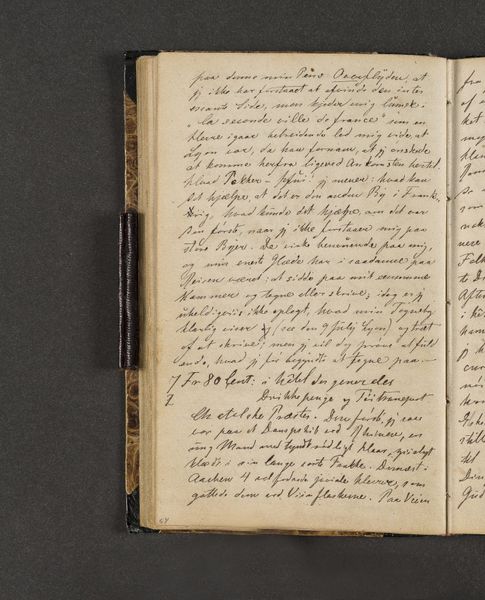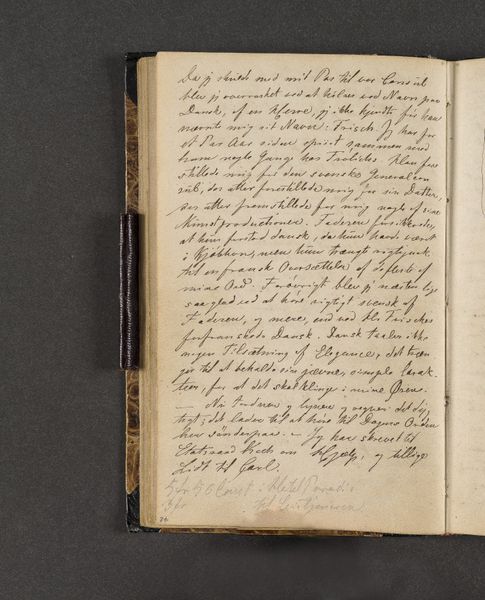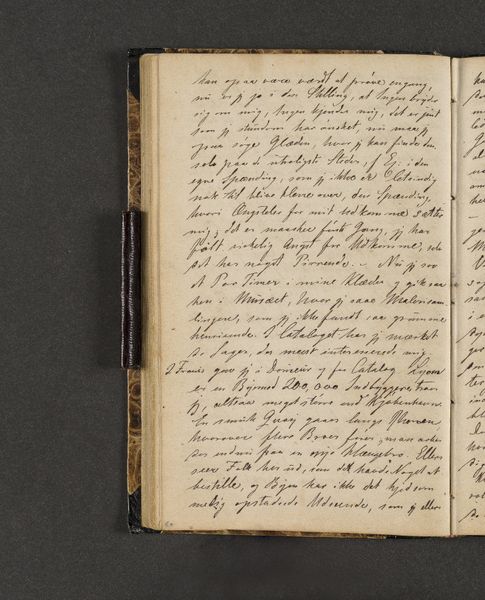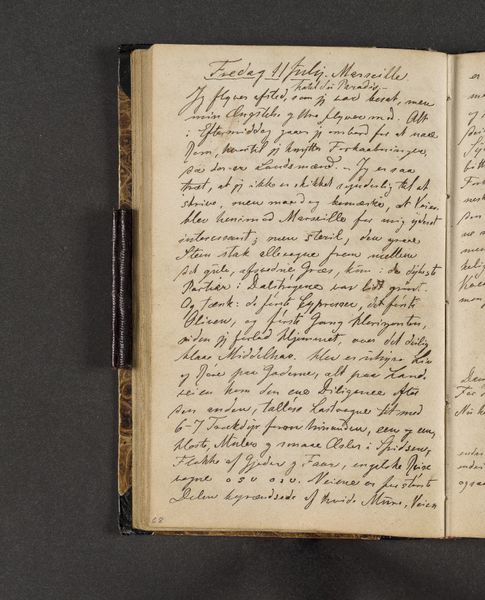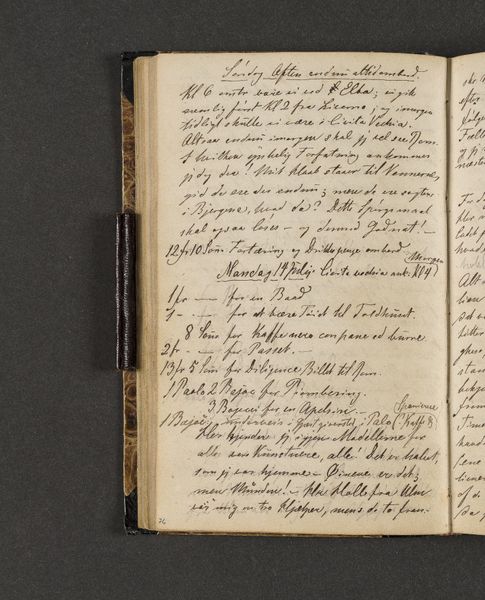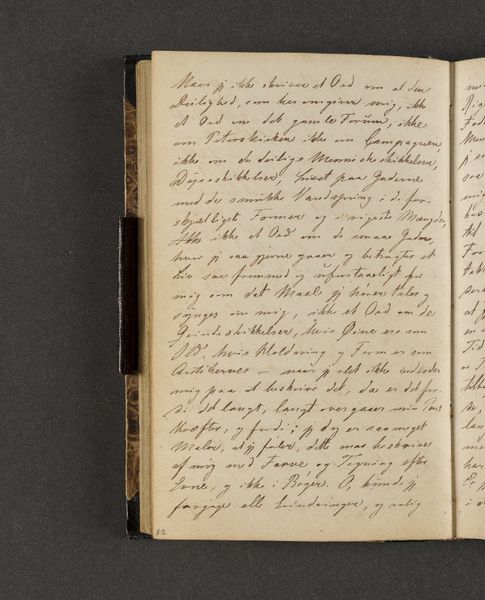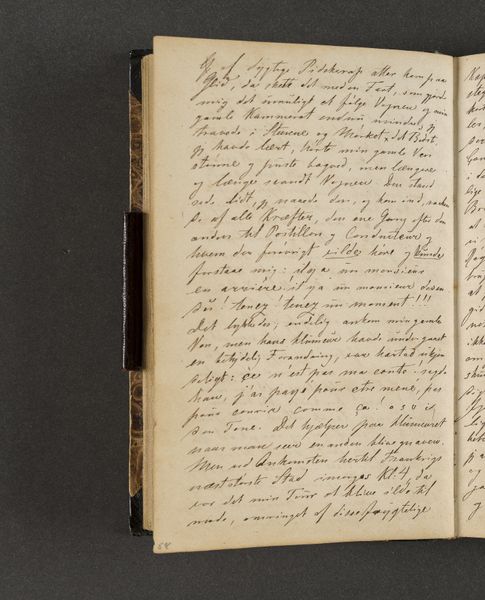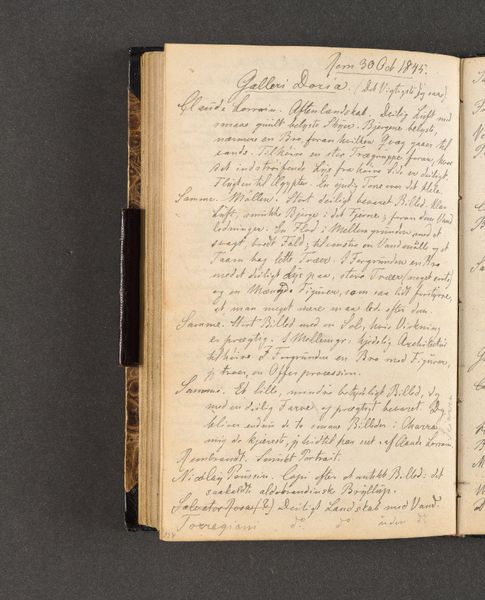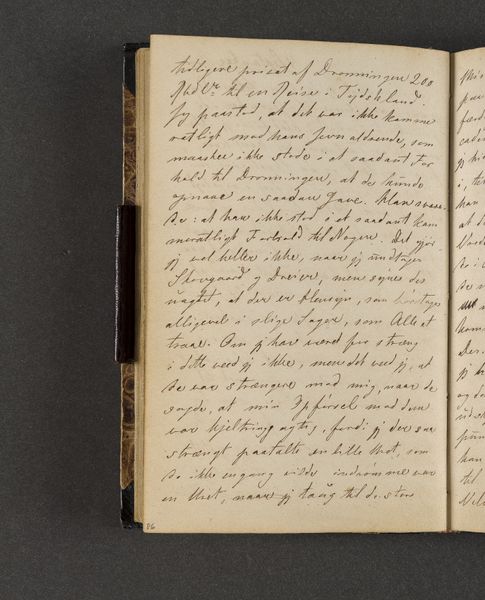
Familie med barn, siddene på dækket af et dampskib mellem Lyon og Beaucaire 1845
0:00
0:00
drawing, paper, ink
#
drawing
#
narrative-art
#
landscape
#
paper
#
ink
#
romanticism
Dimensions: 161 mm (height) x 103 mm (width) x 11 mm (depth) (monteringsmaal)
Curator: Welcome. We are standing before Johan Thomas Lundbye's 1845 ink drawing, "Familie med barn, siddene på dækket af et dampskib mellem Lyon og Beaucaire," currently held at the SMK. What’s your initial reaction? Editor: Well, looking at the density of the ink and tight composition, it feels remarkably intimate and immediate, despite being a scene depicting a rather mundane activity: a family seated on a steamer deck. It’s visually dense, with details crammed into a small space. Curator: Indeed. Lundbye was a keen observer. The artwork is made with brown ink on paper and encapsulates a transient moment during a journey. Considering this piece within Lundbye’s broader Romantic landscapes, the cramped space marks a shift. This is a rare interior for him. Editor: Exactly, and locating this family within the narrative of travel interests me most. The family's voyage between Lyon and Beaucaire suggests connections— trade, migration—the steamship itself as a technology radically altering social rhythms and relations of labor. Who are these people? Where do they come from and what propels them toward Beaucaire? There's an untold story there about mobility and class. Curator: Very well put! Semiotically, we might look to the repetition of linear forms, evoking movement but also enclosure—a paradox mirroring the constrained freedom of early industrial travel. Lundbye seems preoccupied with geometric motifs as they mediate humanity and the landscape. Editor: But it also speaks volumes about societal perceptions. Do we see a celebration or a critique? Or both, existing in the same moment? Lundbye captures that fraught relationship, not merely through aesthetics but by implication, by visualizing a new social configuration that travel enables, at a cost. The industrial revolution's rapid acceleration surely shifted familial structures and the relationship to locality itself. Curator: I am reminded that landscape—both painted and traversed—constitutes something deeply connected with identity. The tension embodied in this piece highlights the transitional, ever-negotiated place between identity, history and progress. Editor: An excellent point to close upon. It's quite interesting how much a simple drawing can trigger within its visual field a range of pressing issues that still confront us.
Comments
No comments
Be the first to comment and join the conversation on the ultimate creative platform.
